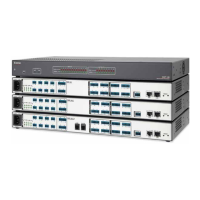Filter (FILT)
Filter function and interface is identical to the mic/line input channel Filter block except
that only three filters are provided (see Filter (FILT) on page30).
Dynamics (DYN)
There is one dynamics processor block available on each virtual path. Dynamics function
and interface is identical to the mic/line input channel Dynamics block,
(see Dynamics (DYN) on page44).
Loudness (LOUD)
There is one loudness processor available on each virtual path. The loudness function and
interface is identical to the Output channel Loudness block (see Loudness (LOUD) on
page58).
Bypass must be disengaged for the loudness processor to function. The bypass button
is red when engaged (loudness control defeated), and gray when disengaged (loudness
control active).
Delay (DLY)
Audio Delay syncs audio to video or to time-align speakers that are placed at different
distances from the listener. The Delay function and interface is identical to the input
channel delay block (see Delay (DLY) on page49).
Gain (GAIN)
Each virtual input channel gain block provides a mono long-throw fader with a – 100.0
to +12.0dB gain range, and a level setting readout below the fader. Fader behavior is
identical to the Pre-mix-point gain block, described in the mic/line input section
(see Pre-mixer Gain (GAIN) on page57). Fader adjustments are in 1dB increments,
while adjustments can be entered manually to 0.1dB resolution.
Default is unmuted at unity (0.0dB) gain.
Virtual Bus Returns, E-H
There are four additional mono virtual bus return inputs. Virtual Bus Returns E through H
are identical to A through D except there are no feedback processors.
As with the virtual bus returns A through D, these returns are used when additional
processing of an input signal is required. It is also useful to apply identical filtering,
dynamics processing, loudness compensation, or signal gain/attenuation to multiple
inputs.
DMP128 • Software Control 68

